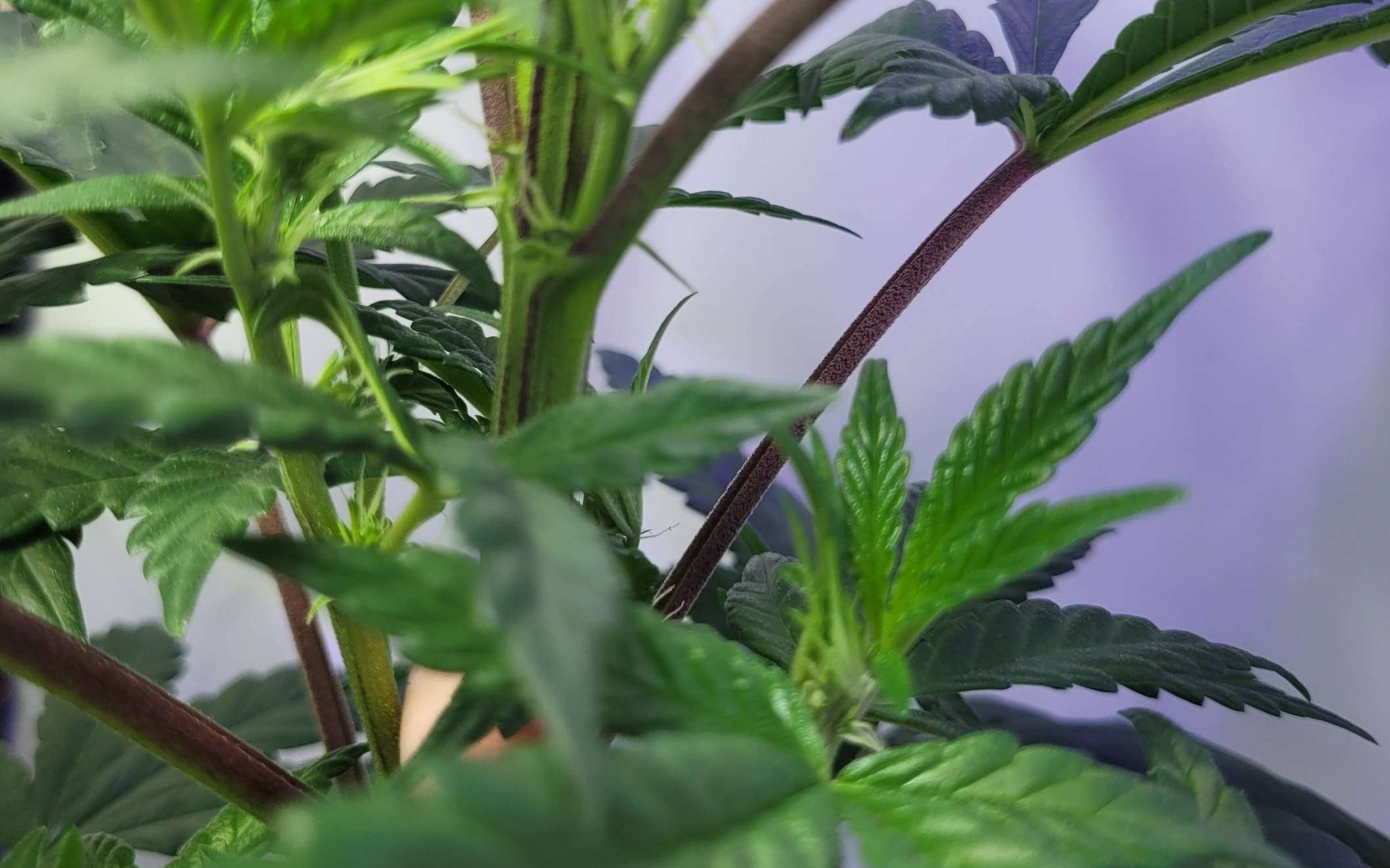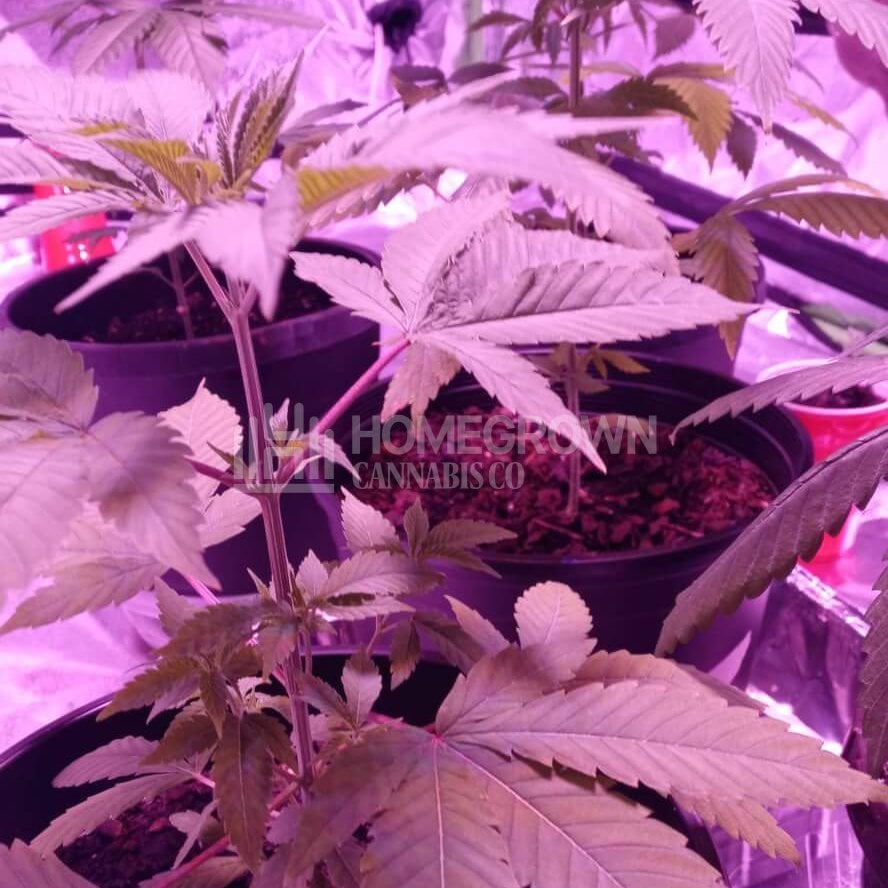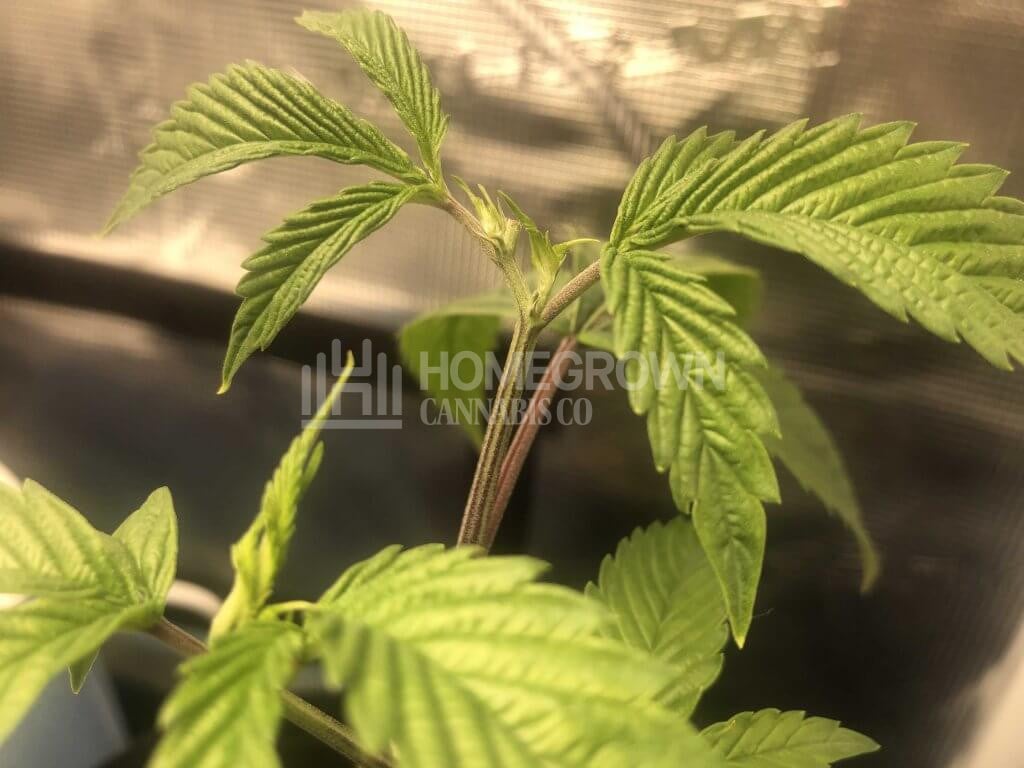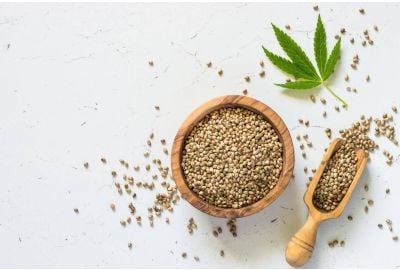Cannabis Purple Stems: Everything You Need To Know
Seeing unusual red and purple colors on your marijuana stalks that you’ve never noticed before? Don’t worry; it’s not always a bad thing. Purple or red stems aren’t a glaring sign that there’s an issue with your plants—they’re often the result of genetics.
Join us to get the full scoop on purple stems on weed plants. We’ll explain what causes them to change color, how you can prevent it from happening, and how to get rid of the pigmentation once it’s developed.
Let’s get started!
What do purple stems mean on weed plants?
Although the buds and leaves of cannabis crops regularly exhibit striking tones, the branches and stems are less prone to color variations. Marijuana plants typically have green stems and branches, but they can also take on a red or purple hue.
If you start seeing red or purple stems, it could be from one of two things:
- Genetics
- Environmental factors
Most of the time, these unusual colors are nothing to worry about, but they may point towards an underlying issue in some cases.

Why are my cannabis stems turning purple?
Various factors can influence the color of your marijuana stems. Some of these elements elevate the bag appeal of your buds, while others are detrimental to your plants’ health.
Here are some of the potential causes of red and purple stems:
Stress
- Transplant or root shock after relocation
- Pests or plagues
- Temperature or humidity problems
- Light or heat stress
- Overwatering
Light intensity
Purple stems on your weed plants can be a sign of stress. The faster you identify any issues, the quicker your crops can recover. It’s vital to inspect your plants if you’ve recently encountered some of these potential stressors:
Intense light exposure often results in discolored stems. These vivid colors are expressed through the leaves and buds, but the stems can also produce a similar hue. In a way, this reaction is similar to human skin getting burned from the sun.
Trimming and pruning result in more light penetration, so you may notice more pigmentation after defoliation. Low-stress training techniques also increase the development of pink, red, or purple cannabis stems.
It’s normal for your plants to react this way to intense light exposure, provided they’re not responding to stress from cannabis light burn.

Temperature
Abrupt temperature fluctuations are a primary cause of cannabis purple stems. An outdoor marijuana plant with a day/night temperature range of 75℉–45℉ is more likely to produce red or purple stems than one with consistent levels.
Temperature fluctuations in indoor grow rooms may be due to your specific light cycle for weed. Make sure the dark period isn’t more than 10–15℉ cooler than the light cycle.
Some strains, collectively known as purple strains, are naturally engineered to respond to the production of anthocyanin. They develop red or purple tones on their foliage and stems.
Growers purposefully expose these plants to cooler nighttime temperatures to showcase their gorgeous colors. If you notice red or purple stems on your weed crops after being in colder weather, keep an eye on them for a few days. Even more so if they’re not part of the purple family.
If you see signs of stress, you might have to crank up the temperature in your grow room or move your plants indoors. In general, the best temperature for growing weed is around 68–77℉ during vegging and approximately 65–85℉ during flowering.
Pathogens
Plant diseases like botrytis and fusarium can result in cannabis with purple stems. These pathogens spread rapidly between crops, so it’s essential to get rid of them as soon as possible.
Botrytis typically attacks larger cannabis plants and creates a distinct brown line on the affected branches and stems. This fungus steals nutrients from your crops and can significantly delay their growth. In extreme cases, botrytis can lead to the death of your plants.
Fusarium usually latches on to delicate marijuana seedlings and causes them to fall over. This pathogen attacks their stalks, producing brown, red, or slightly purple weed stems.
Nutrient deficiencies
A lack of cannabis nutrients shows up through various symptoms, like yellow and dry foliage along with discolored leaves and stems.
Phosphorus deficiencies are particularly known to produce cannabis with purple stems before the leaves turn brown and brittle. Magnesium shortages often result in red petioles, which are the stalks that attach a leaf to a stem.
Besides discolored stems, nutrient deficiencies also lead to damaged foliage and stunted growth. It’s essential to identify and rectify any hiccups as soon as possible.
pH levels
A slightly acidic pH level keeps your marijuana crops happy and healthy. If your pH drifts too far off the scale, it can affect the growth of your plants and leave your cannabis with purple stems.
The ideal pH for cannabis depends on your chosen substrate. A soil medium is best suited to a pH level of 6.5, while the optimal hydro level is around 5.6–5.8. Use a pH meter, and don’t forget to calibrate it regularly.
Genetics
Thanks to their diverse genetic lineage, marijuana plants exhibit various colors. Some strains display incredible pigments that range from orange and red to blue, green, and purple.
Certain cultivars contain higher anthocyanin levels, an organic compound that provides red, purple, and blue pigmentation. This flavonoid is also found in concord grapes, red cabbage, eggplant, and other similarly-toned crops.
Exposing your plants to cooler temperatures stimulates the production of anthocyanin. As a result, the buds and leaves produce a vibrant purple color that leads to purple stems on your weed plants. As long as your cannabis crops are healthy and happy, there’s no reason to worry about their purple pigmentation—just enjoy it!

How to prevent cannabis purple stems
If your cannabis stems are turning purple yet your plants look healthy, it could just be a genetic predisposition. Don’t make any changes for a week or two to see whether they continue thriving. If they do, you’re in the clear.
As soon as your crops start looking different, check for any visible stress signals and figure out the problem. Once you know what you’re dealing with, you can treat it and stop it from happening again.
Here are some ways to prevent cannabis with purple stems:
- Stick to the correct pH levels
- Feed your plants with the right nutrients
- Avoid temperature fluctuations
- Maintain optimal humidity levels
- Watch out for transplant shock, light burn, and overwatering

How to fix cannabis purple stems
If you have cannabis with purple stems and your crops show signs of stress, you need to attend to them immediately. Your first course of action is to figure out which of the following situations are to blame:
- Transplant or root shock after relocation
- Pests or plagues
- Temperature or humidity problems
- Light stress
- Nutrient deficiency
Follow these tips to fix stressed purple cannabis stems:
- Transplant or root shock after relocation: Ensure your plants have good drainage, plenty of water, and aerated soil to recover from transplant shock. Expect to wait a couple of days. Check our reports on transplanting cannabis and transplanting autoflower plants for more details.
- Pests or plagues: After treating your crops with a suitable solution, consider cutting off any badly affected foliage to help the healthier bits continue growing. A root booster is an effective way of reducing stress and accelerating your plants’ metabolism.
- Temperature or humidity problems: Using a thermometer and hygrometer is the best way of controlling temperature and humidity. A proper ventilation setup also works wonders.
- Light stress: Place your lights at the correct distance to avoid leaf burn and opt for full-spectrum LED lights to prevent cannabis purple stems.
- Nutrient deficiency: Use nutrient formulas with optimal phosphorus, potassium, and nitrogen levels during every stage of your plant’s life. A pH meter is also essential.

The lowdown on purple cannabis stems
There’s no reason to panic if you see red, blue, pink, or purple stems on your weed plants. This unusual discoloration often results from unique genetics and adds to the bag appeal of your buds.
If your crops develop a strange hue out of nowhere, monitor them closely and look for signs of stress. Once you detect the issue, make sure to attend to it immediately to keep your cannabis plants happy and healthy.
Remember to stock up on your marijuana seeds at our seed bank and visit our blog for more expert tips on growing cannabis.
About the author: Parker Curtis
Parker Curtis has around a decade of cannabis-growing experience, specialising in soil-less and hydro grows. He’s mastering outdoor, greenhouse, and indoor grows.


